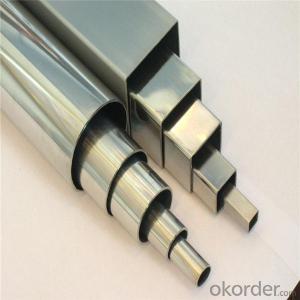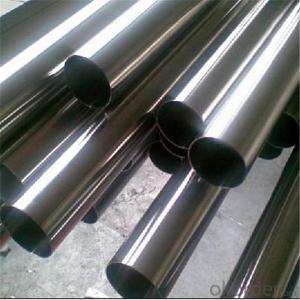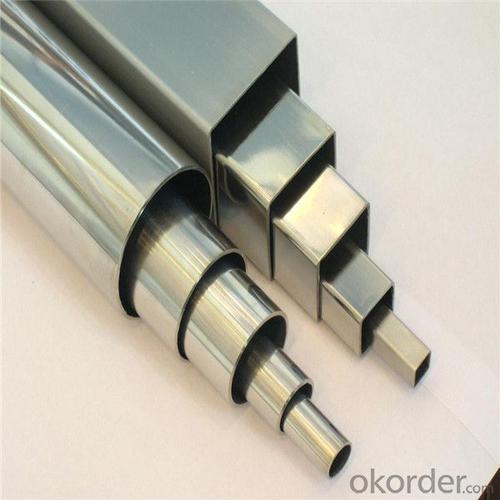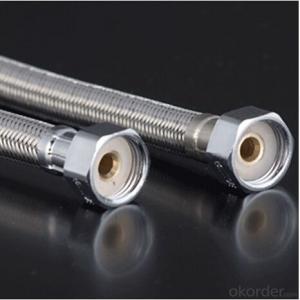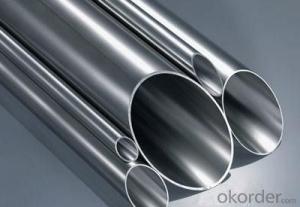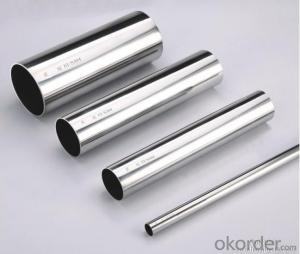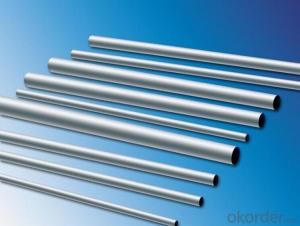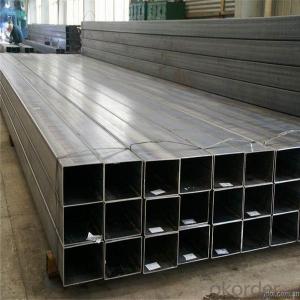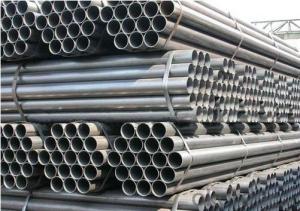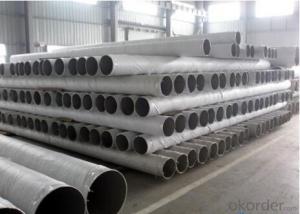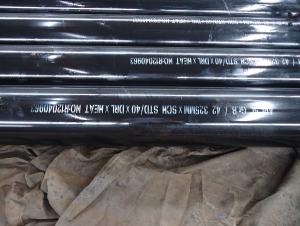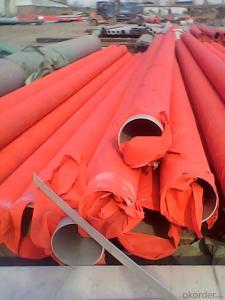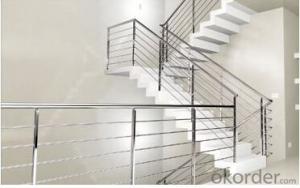321 Stainless Steel Pipe Price with SGS and BV approved
- Loading Port:
- Shanghai
- Payment Terms:
- TT OR LC
- Min Order Qty:
- 4 m.t.
- Supply Capability:
- 50000 m.t./month
OKorder Service Pledge
OKorder Financial Service
You Might Also Like
Specification
Details:
Description | stainless steel brake pipe |
Supply Capacity | 1500 tons/month |
Process Method | cold drawn and cold rolled |
Out Diameter | 6-711mm |
Wall Thickness | 0.3-120mm |
Length | 6-25 meters |
Steel Grade | 200 (Ni : 0.8%), 201B (Ni : 3%), 201H (Ni : 5%) |
301 (Ni : 6%), 304, TP304, TP304L/304L, 321, TP321, 316, TP316L, 316L, 316Ti | |
317, 317L, 309S, 310S(2520), 347, Duplex 2205, Duplex 2207, etc. | |
Standards | ASTM / ASME, GB, DIN, JIS, T14975, etc. |
Specification | O.D: 1/4" - 32" (inch) |
W.T: SCH5S, SCH10S,SCH40S,SCH80S,SCH160S,etc. | |
Or non-regular size to be tailored as required. | |
Application | Heat exchanger,Liquid delivery,Structure,etc. |
Packing | 1.with plastic cap to protect both ends |
2.plastic bag wrapped outside the pipe | |
3.bundles to be covered by polythene & strapped securely . | |
4.if require ,then pack into wooden box. | |
Certificate | ISO 9001:2008 |
Delivery time | 30-60 days depend on Quantity |
Payment Term | T/T, Irrevocable L/C at sight |
Trade Term | FOB , CFR , CIF |
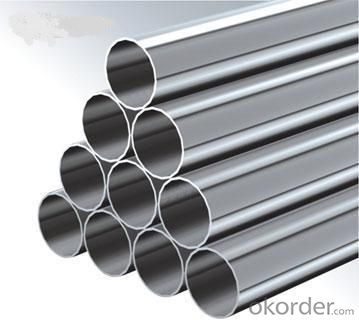
Specifications of SS Tube 38mm:
1)Commodity:seamless stainless steel tube
2)Technique:cold and hot rolled
3)Surface:2B,HL,BK,NO.1,NO.4,NO.8,etc.
4)Material: TP304, TP304L, TP310 / S, TP316L, TP316 / 316L dual grade, TP317L, TP309/S, TP410,TP420,TP430,TP904L
5) Standards: ASTM ,AISI,etc.
6) Outer diameter:0.6mm-1200mm
7) Thickness:0.3mm-120mm
8) Length: as your requirement
9) Applications: for fluid and gas transport; structural and machining applications
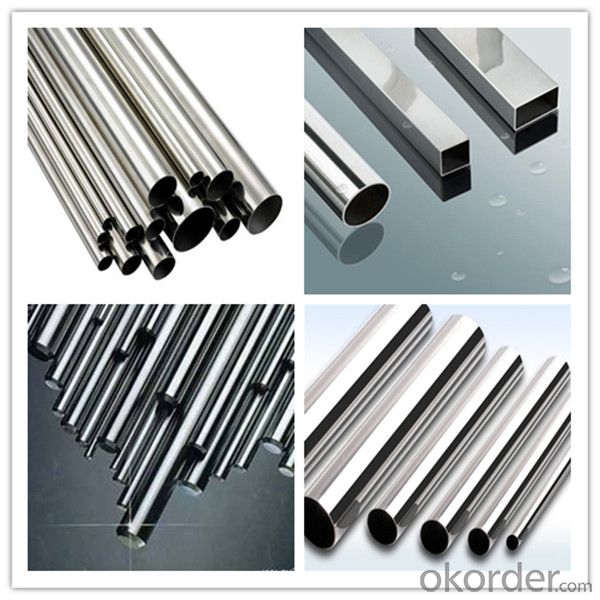
Why choose us:
1. Independent warehouse & factory
2. Quick delivery (within 3-7 days)
3. Best service
4.High quality with reasonable price
5.High efficiency
6.Good reputation
7. Samples can be provided as your requirements.
- Q: How do you calculate the expansion and contraction of stainless steel pipes?
- In order to determine the expansion and contraction of stainless steel pipes, one must consider the coefficient of thermal expansion specific to the grade of stainless steel being utilized. This coefficient measures the extent to which a material expands or contracts in response to temperature fluctuations. To begin, ascertain the initial length of the stainless steel pipe, typically measured at room temperature. Subsequently, determine the temperature variation to which the pipe will be exposed. This variation is determined by calculating the difference between the maximum and minimum temperatures the pipe will encounter. Following this, multiply the initial length of the pipe by the coefficient of thermal expansion corresponding to the specific grade of stainless steel employed. Since the coefficient of thermal expansion can differ depending on the alloy and composition of the stainless steel, it is important to consult the manufacturer's specifications or engineering references for the specific grade in use. Lastly, multiply the obtained result by the temperature variation to ascertain the expansion or contraction of the stainless steel pipe. A positive value indicates expansion, while a negative value indicates contraction. It is crucial to note that the calculated expansion or contraction of the stainless steel pipe is an approximate value and can vary due to factors such as the specific alloy composition, manufacturing processes, and installation conditions. As such, it is advisable to consult a qualified engineer or refer to industry standards for more accurate calculations in specific applications.
- Q: Can stainless steel pipes be used for oil and gas transportation?
- Yes, stainless steel pipes can be used for oil and gas transportation. Stainless steel is highly resistant to corrosion and can withstand high pressures and extreme temperatures, making it suitable for transporting oil and gas safely and efficiently.
- Q: How do you protect stainless steel pipes from internal corrosion?
- To safeguard stainless steel pipes from internal corrosion, one effective approach is the utilization of a corrosion inhibitor. These inhibitors, which are chemical substances, can be incorporated into the fluid that flows through the pipes. This addition creates a protective layer on the inner surface of the pipe, acting as a barrier that prevents direct contact between the corrosive agents in the fluid and the stainless steel. Multiple types of corrosion inhibitors exist, and the choice depends on the specific application and the nature of the fluid being transported. Examples include organic inhibitors, which generate a protective film on the pipe's surface, and inorganic inhibitors, which interact with the corrosive agents to form less harmful compounds. An alternative method for shielding stainless steel pipes from internal corrosion involves cathodic protection. This technique entails linking the stainless steel pipe to a sacrificial anode composed of a more reactive metal like zinc or aluminum. This connection establishes a galvanic cell, whereby the anode corrodes instead of the stainless steel pipe. By sacrificing the anode, the pipe is effectively shielded from internal corrosion. Regular maintenance and inspection are also vital in preventing internal corrosion. It is crucial to monitor the condition of the pipes, promptly identify any indications of corrosion or damage, and promptly address any issues. Flushing the pipes with clean water or suitable cleaning solutions can aid in the removal of any deposits or contaminants that might contribute to corrosion. Moreover, maintaining the proper composition and pH levels of the fluid is essential in preventing internal corrosion. In certain cases, adjusting the fluid's pH or adding corrosion inhibitors tailored to the specific fluid being transported can significantly decrease the risk of corrosion. In conclusion, the combination of corrosion inhibitors, cathodic protection, regular maintenance, and appropriate fluid management is an effective means of safeguarding stainless steel pipes from internal corrosion. This approach ensures the pipes' durability and optimal performance.
- Q: Can stainless steel pipes be used for both high and low-pressure applications?
- Yes, stainless steel pipes can be used for both high and low-pressure applications. Stainless steel pipes are known for their excellent strength, durability, and corrosion resistance, making them suitable for various pressure conditions. They are commonly used in industries such as oil and gas, chemical processing, and power generation, where both high and low-pressure applications are encountered.
- Q: Can stainless steel pipes be used for brewery equipment?
- Indeed, brewery equipment can make use of stainless steel pipes. The utilization of stainless steel in brewery equipment is highly recommended owing to its resistance to corrosion, longevity, and capability to uphold the quality of the beer. Notably, stainless steel pipes exhibit no reactions with the beer or any cleaning and sanitizing substances employed during the brewing procedure, guaranteeing the purity and flavor of the end product. Furthermore, stainless steel pipes are hassle-free to clean and uphold, thereby diminishing the potential for contamination and facilitating streamlined operations within the brewery.
- Q: 304 stainless steel tube with the diameter of 25*2-3 is what mean
- This is according to the "water drawing standards" (GBT50106-2001) in 2.4.2-2 seamless steel pipe, welded steel pipe (straight or spiral seam), brass, stainless steel pipe, pipe diameter should be D diameter * thickness representation (such as D108 * 4 and D159 * 4.5); and the provisions of the habit of acting D with seamless pipe diameter.
- Q: Can stainless steel pipes be used for brewery and beverage industry applications?
- Stainless steel pipes are suitable for use in brewery and beverage industry applications. This material is renowned for its exceptional corrosion resistance and hygienic properties, making it an ideal option for these sectors. The presence of high levels of chromium and nickel in stainless steel pipes provides excellent protection against corrosion caused by chemicals, acids, and high temperatures. Moreover, stainless steel pipes are easy to clean and maintain, ensuring the highest level of hygiene required in brewery and beverage production. The smooth inner surface of these pipes also reduces the risk of contamination and bacterial growth, making them even more suitable for these applications. In summary, stainless steel pipes offer durability, reliability, and sanitary features that make them the preferred choice for the brewery and beverage industry.
- Q: What are the temperature limits for stainless steel pipes?
- The temperature limits for stainless steel pipes depend on the specific grade of stainless steel being used. Generally, stainless steel pipes can withstand high temperatures, making them suitable for a wide range of applications. For austenitic stainless steel grades like 304 and 316, the temperature limits typically range from -250°C to 925°C (-418°F to 1,700°F). These grades exhibit excellent resistance to corrosion and can maintain their mechanical properties at elevated temperatures. Ferritic stainless steel grades, such as 430, have slightly lower temperature limits, typically ranging from -150°C to 815°C (-238°F to 1,499°F). While these grades offer good resistance to corrosion, they have lower thermal conductivity and may experience reduced strength at high temperatures compared to austenitic grades. It is important to note that the temperature limits can vary based on factors such as pipe thickness, surface condition, and the specific application. It is recommended to consult the manufacturer or relevant design codes to determine the precise temperature limits for a specific stainless steel grade and application.
- Q: Can stainless steel pipes be pickled and passivated?
- Yes, stainless steel pipes can be pickled and passivated. Pickling is a chemical process that removes impurities and surface contaminants from stainless steel, while passivation is a treatment that enhances the corrosion resistance of the material. Both processes are commonly used in the industry to ensure the quality and longevity of stainless steel pipes.
- Q: What is the difference between 304J1 and 316J1 stainless steel pipes?
- The main difference between 304J1 and 316J1 stainless steel pipes lies in their composition and properties. 304J1 stainless steel is a variant of 304 stainless steel, which contains a higher percentage of manganese to enhance its formability and reduce the risk of strain hardening during fabrication. This makes it more suitable for certain applications where deep drawing or severe bending is required. However, it is less corrosion-resistant compared to 316J1 stainless steel. On the other hand, 316J1 stainless steel is a variant of 316 stainless steel, which contains a higher percentage of nitrogen to improve its strength and corrosion resistance. It also has slightly better resistance to pitting and crevice corrosion in chloride environments. Therefore, 316J1 stainless steel pipes are often preferred in applications where higher corrosion resistance is required, such as marine environments or chemical processing plants. In summary, while both 304J1 and 316J1 stainless steel pipes are suitable for various applications, the choice between them depends on the specific needs of the project, including the level of corrosion resistance required and the fabrication processes involved.
Send your message to us
321 Stainless Steel Pipe Price with SGS and BV approved
- Loading Port:
- Shanghai
- Payment Terms:
- TT OR LC
- Min Order Qty:
- 4 m.t.
- Supply Capability:
- 50000 m.t./month
OKorder Service Pledge
OKorder Financial Service
Similar products
Hot products
Hot Searches
Related keywords
